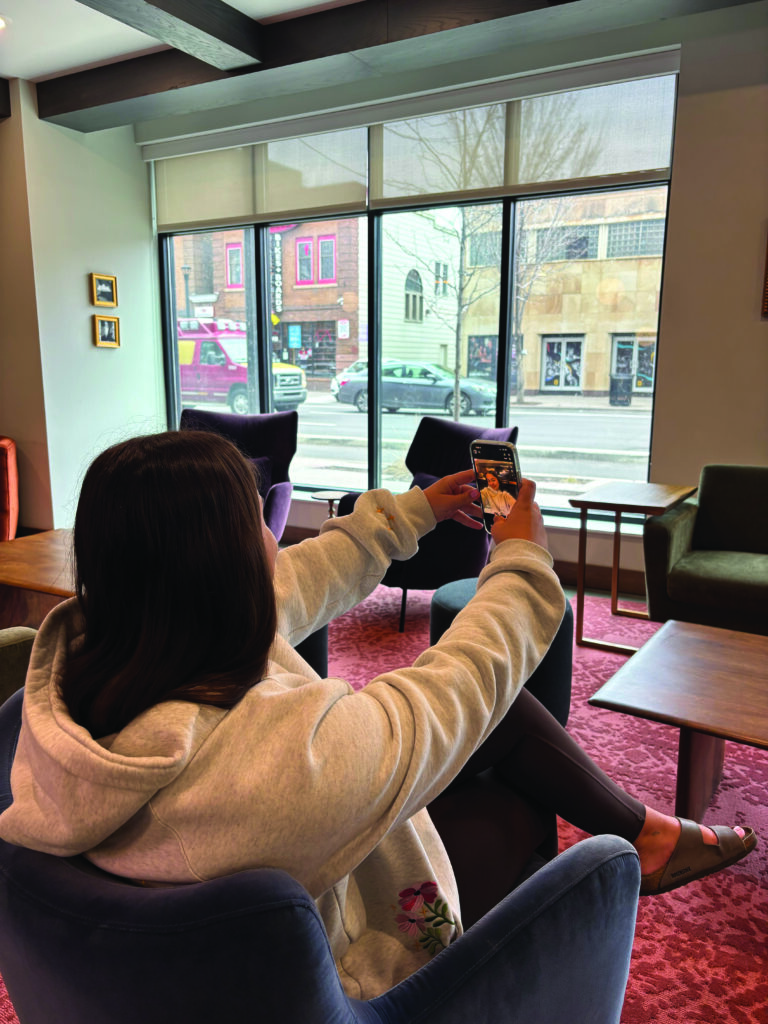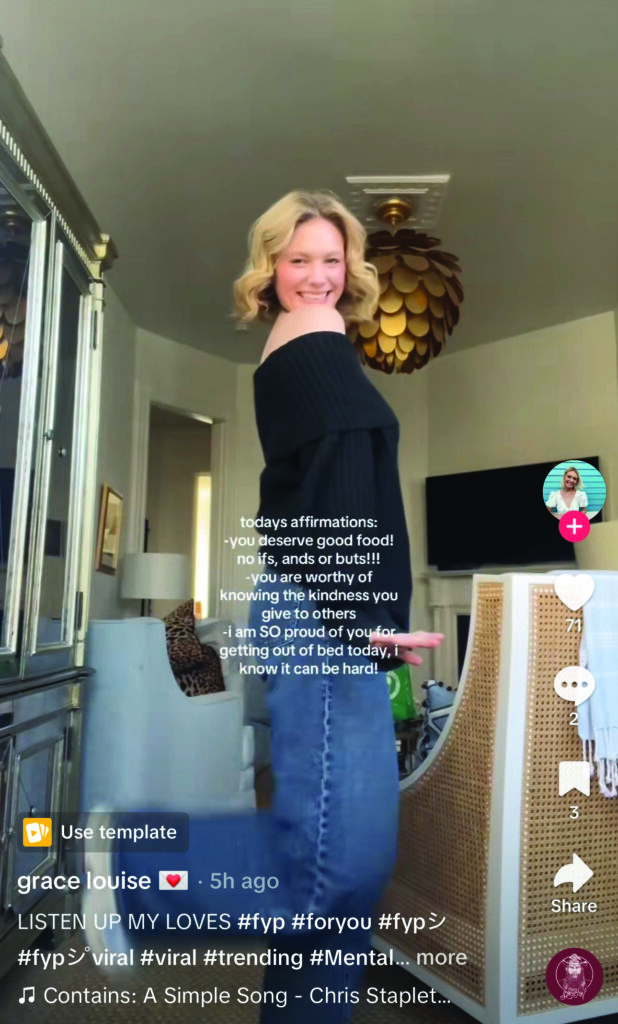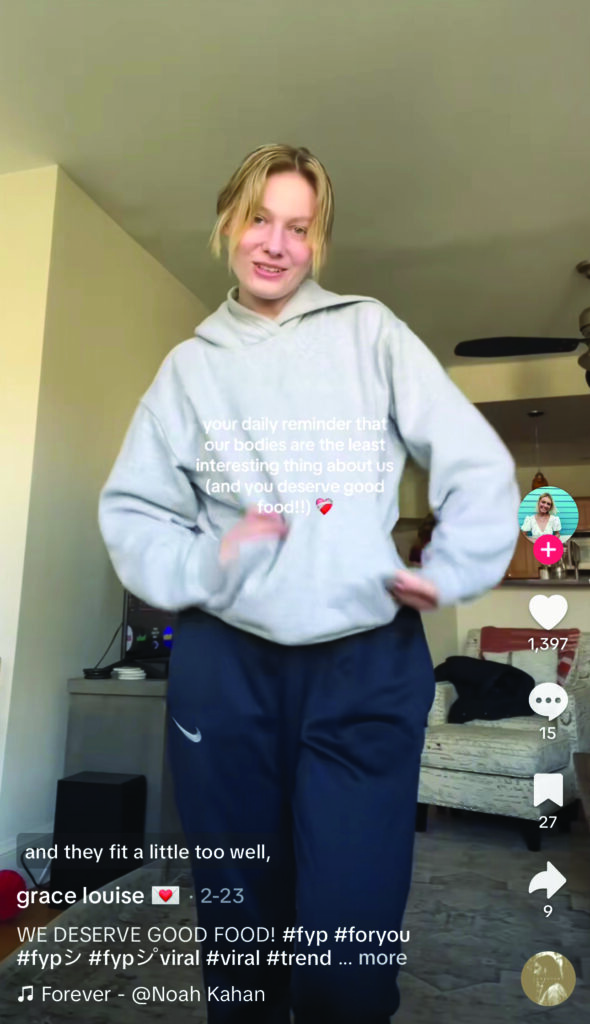By: Ellie Tulkki
Remember the body positivity movement? After years of it being fashionable to challenge unrealistic beauty standards displayed on social media, “skinny” is back with a vengeance. Once again, every interaction with your phone risks reinforcing the message that the thinner you are, the better you are.
“Every time you pick up your phone, there is a reason to feel bad about yourself,” says Jillian Lampert, Vice President of Communications at the Emily Program, an organization that offers eating disorder treatment, awareness and recovery.
In the digital age, curated and altered images blur the line between reality and illusion, introducing a modern phenomenon with a new and disturbing name: Digital Dysmorphia. Constant exposure to internet images makes it easy to obsess over perceived physical flaws.
The surge in the availability of weight-loss drugs like Ozempic has encouraged unrealistic beauty standards and quick weight-loss solutions that pressure individuals to conform to a certain body shape and size.
A study done by the National Library of Medicine earlier this year found there was a strong association between social media usage and body dysmorphia symptoms.
Thirty-three years ago, Lampert embarked on her own personal recovery journey, confronting a silent battle with an eating disorder. Today, Lampert is a passionate advocate for those like her as a board member of the Eating Disorders Coalition. She also teaches a course on managing eating disorders at the University of Minnesota.
When Lampert was struggling with her eating disorder decades ago, she said people used to look up to celebrities and movie stars they saw in monthly magazines and print publications. Times have changed.

“You used to look at a magazine and have to wait at least a month to get new images, so there was a more static image of body perceptions. Now, social media has picked up steam, and people get a new magazine every second,” said Lampert. “It’s overwhelming.”
The shift in how individuals perceive images on the internet is what introduced the idea of digital dysmorphia.
Palgrave Communications, a peer-reviewed journal known for its focus on social sciences and public health, defines digital dysmorphia as “excessively preoccupied with perceived flaws in your appearance due to frequent exposure to digitally altered images on social media. That can lead to increased dissatisfaction with your physical self and sometimes even the decision to seek cosmetic procedures matching their digitally modified image.”
“There is a subtle idea that you might not have to look like the influencer, but you are now obligated to be a better you,” said Lampert.
Avari Hanson, a student at the University of Minnesota, knows this feeling all too well.
Hanson began struggling with an eating disorder when she was 15 years old at the height of the COVID-19 pandemic.
“During COVID-19, I became obsessed with trends, losing weight and looking at myself become skinnier every day,” said Hanson. “It was like I saw everyone doing the Chloe Ting workouts, so I thought I had to do them too.”
Chloe Ting is a fitness influencer renowned for her viral two-week shred challenge, which gained widespread popularity in 2021 and is said to deliver quick weight-loss results.
The impact of social media is a big reason why Hanson feels it’s so important to raise awareness, which she does by advocating for eating disorder recovery and support. “I have coping strategies, and I have recovered significantly, but social media is a constant reminder of how easy it is to fall back into old habits,” said Hanson.
Lampert, along with other experts, is increasingly concerned about how prone younger generations are to developing eating disorders.
“Think about it like a Venn diagram; one bubble is how receptible you are to eating disorders, and one bubble is the environment of social media. Then there is this third bubble that is psychological, such as how sensitive we are to external pressure. Some of it’s genetic and some of it’s social,” Lampert said.
The shift back to diet culture, fitness trends and using weight-loss drugs to be “skinny” is once again fueling the internet.
“We are seeing less body positivity. Now we have weight-loss drugs, and there is an outcry from body positivity influencers because ‘why wouldn’t we lose weight if we can,’” said Lampert.
Body positivity influencers are still trying to push back, challenging these unrealistic ideals.
“The reason I started making content was to normalize a ‘normal’ body,” said Grace Louise, a social media influencer known for advocating body positivity and self-love. “All I ever saw was thin women, and they were celebrated, whereas curvier women would get scrutinized. My philosophy is that every body is a perfect body. No ifs, ands, or buts.”
According to the Pew Research Center, weight-loss drugs like Ozempic, Rybelsus and Wegovy have soared in sales by 89% more since 2022.
“Now everyone can weigh less, which sends a message that everyone should weigh less,” Lampert said. “Why aren’t you using these magic medicines when you could and maybe should?”
Social media and celebrities have glorified these weight-loss drugs, leaving a powerful digital footprint. “There are going to be even more people with voices in their heads telling them they need to lose weight,” Lampert said.
In reality, the content they are consuming is often far from realistic.
“It’s so toxic because these girls who have genetically ‘ideal’ bodies will go on social media to post workout routines and what they did to look like that, but it’s filters or genetics,” said Hanson.
And that is exactly what’s happening.
“The data is clear that viewing social media is bad for us,” Lampert said. “We used to know that everything was photoshopped, people were wearing makeup, lighting was just specific, etc. But now, with social media advancements, we don’t know that as much. It’s harder to remember those images aren’t necessarily real.”
It all takes a serious mental health toll.
Louise began dealing with her body issues at a very young age. “I was always told I was too thin, and then when I gained weight, I wasn’t thin enough. It took such a toll on my mental health,” said Louise.
Is the best way to fight these effects of social media with social media itself? Louise seems to think so.


“I remember getting one comment on a video that said something like, “We have the same body, and you made me love mine,” and it was then that I realized how powerful social media can be,” Louise said.
Louise is most active on TikTok, where her most recent video, gaining over 10,000 views, offers a powerful reminder: “Our bodies are the least interesting thing about us, and you deserve good food!”
The constant pull of social media is designed to keep us engaged, often amplifying our insecurities and reinforcing unhealthy comparisons.
The Emily Program, an organization that offers eating disorder treatment, awareness, and recovery, teaches those struggling with social media usage ways to circumvent it. “The more exposure you have to something that tells you who you ‘need’ to be is impactful on someone. We need to find a balance,” said Lampert. “If we don’t put our phones down, we will be sucked into the algorithms all night.”
It’s not just about putting a name on the problem, it’s about offering practical solutions that empower people to take control of their mental health, their relationship with their bodies and their social media consumption.
“Your body allows you to do so many things each day, so rather than focusing on what it isn’t, try thanking it for what it is,” said Louise.
If you or someone you know is struggling, please reach out for help. The National Eating Disorders Association (NEDA) offers confidential support and resources to those affected. You can contact their helpline at 1-800-931-2237 or visit www.nationaleatingdisorders.org for more information. Remember, you are not alone, and help is available.
